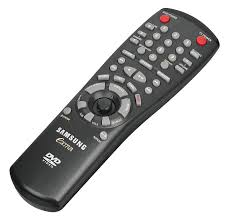The Fascinating World of Remote Control
Remote control technology has revolutionised the way we interact with various devices and gadgets in our daily lives. From television sets to drones, remote controls have become ubiquitous tools that offer convenience and entertainment at our fingertips.
Evolution of Remote Control
The concept of remote control dates back to the early 20th century, with the first wireless remote control being developed for a television set in the 1950s. Since then, remote control technology has advanced significantly, incorporating infrared, radio frequency, and Bluetooth connectivity to operate a wide range of devices with precision and ease.
Applications in Entertainment
Remote controls play a crucial role in the entertainment industry, allowing users to navigate through channels, adjust volume levels, and control playback functions on televisions, audio systems, and streaming devices. Gaming consoles also rely on remote controls or game controllers to enhance the gaming experience for players.
Remote-Controlled Vehicles
Remote-controlled vehicles, such as cars, boats, planes, and drones, have gained immense popularity among hobbyists and enthusiasts. These miniature vehicles are operated using handheld remote controls that transmit signals to control their movements. Remote-controlled vehicles offer a thrilling experience for users of all ages.
Industrial and Commercial Applications
Beyond entertainment, remote control technology is widely used in industrial and commercial settings for various purposes. Remote-controlled robots are employed in hazardous environments to perform tasks that are unsafe for humans. Drones equipped with cameras are used for aerial photography, surveillance, and monitoring activities.
The Future of Remote Control
As technology continues to evolve rapidly, the future of remote control holds exciting possibilities. Advancements in artificial intelligence and connectivity are likely to enhance the capabilities of remote-controlled devices further. From smart home automation to autonomous vehicles, remote control technology is set to play a pivotal role in shaping our interconnected world.
In conclusion, remote control technology has come a long way since its inception and continues to impact various aspects of our lives. Whether for entertainment or practical applications, remote controls have become indispensable tools that simplify tasks and provide endless opportunities for innovation.
Top 6 Tips for Effective Remote Working
- Find a quiet and comfortable space to work from.
- Set up a dedicated workspace to help separate work from personal life.
- Establish a routine to maintain productivity and work-life balance.
- Communicate regularly with your team using video calls, emails, and chats.
- Take breaks throughout the day to rest your eyes and stretch your body.
- Use task management tools to stay organised and track your progress.
Find a quiet and comfortable space to work from.
When using a remote control, it is essential to find a quiet and comfortable space to operate from. A peaceful environment can help minimise distractions and enhance focus, allowing for smoother control of devices. Additionally, working in a comfortable space can contribute to better posture and overall well-being while using the remote control for extended periods. By creating a serene and ergonomic workspace, users can maximise their efficiency and enjoyment when engaging with remote-controlled devices.
Set up a dedicated workspace to help separate work from personal life.
Setting up a dedicated workspace for your remote-control activities can make a significant difference in maintaining a healthy work-life balance. By creating a designated area for your remote-control projects, you can establish boundaries that help separate your professional responsibilities from your personal life. This physical distinction not only boosts productivity and focus during work sessions but also allows you to mentally switch off and unwind when you step away from your workspace, promoting overall well-being and relaxation.
Establish a routine to maintain productivity and work-life balance.
Establishing a routine is key to maintaining productivity and achieving a healthy work-life balance when using remote control technology. By setting specific work hours, taking regular breaks, and designating time for personal activities, individuals can create a structured schedule that promotes efficiency and well-being. Incorporating time management techniques and prioritising tasks can help individuals stay focused and organised while working remotely. Balancing work responsibilities with leisure activities is essential for avoiding burnout and ensuring overall satisfaction with both professional and personal life. By establishing a routine that caters to individual needs and preferences, remote control users can maximise productivity while enjoying a fulfilling lifestyle.
Communicate regularly with your team using video calls, emails, and chats.
Regular communication is key when working with a remote team. Utilising a combination of video calls, emails, and chats helps maintain strong connections and ensures that everyone stays informed and engaged. Video calls provide a personal touch, allowing team members to interact face-to-face despite physical distance. Emails are useful for sharing detailed information and updates, while chats enable quick exchanges for immediate communication needs. By incorporating these communication tools into your remote work routine, you can foster collaboration, clarity, and cohesion within your team.
Take breaks throughout the day to rest your eyes and stretch your body.
It is important to take breaks throughout the day when using remote controls to rest your eyes and stretch your body. Prolonged periods of focusing on screens or operating remote-controlled devices can lead to eye strain and physical discomfort. By incorporating short breaks into your routine, you can give your eyes a chance to relax and prevent stiffness in your body. Remember to look away from the screen, blink frequently, and perform simple stretches to maintain optimal eye health and overall well-being while using remote controls.
Use task management tools to stay organised and track your progress.
Utilising task management tools is a valuable strategy to enhance organisation and monitor your advancements effectively when it comes to remote control. By employing these tools, such as digital planners or project management software, you can create structured workflows, set priorities, and track your tasks efficiently. This approach not only aids in maintaining focus and productivity but also provides a clear overview of your progress, ensuring that you stay on top of your remote control projects with ease.

